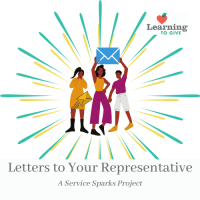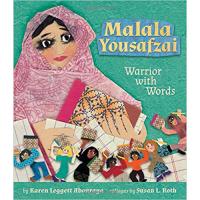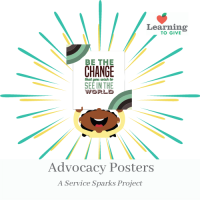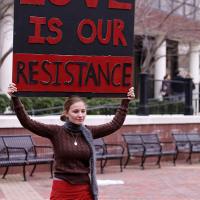Ignite meaningful action that lights up the world through "Service Sparks" youth projects! Use your voice to compose letters to your state representatives advocating change for an issue of your choice.
In this book, we learn the true story of Malala Yousafzai, a Pashtun Muslim girl living in Pakistan who was shot for daring to be a girl demanding an education. Malala survived and decided to speak up for human rights and the right to universal childhood education. Her path inspires others...
In this true story, Bryan Stevenson fights injustice and champions wrongfully incarcerated Black men on death row with special attention given to the case of Walter McMillian. Stevenson is a lawyer who works to restore basic human rights for vulnerable people, including people who...
Ignite meaningful action that lights up the world through "Service Sparks" youth projects! Listen carefully to the community or personal needs expressed by others. Focus on an issue you care about and make a poster to simply communicate a message you want others to hear. Images and words together can inform and persuade to make change.
In this activity, participants learn an effective and thoughtful process for creating positive change. Young people relate advocacy to philanthropy as a way to constructively impact social change.
We are all connected in a global community, and the United Nations' Sustainable Development Goals (SDGs) call us to action to make a better future for everyone. In order to be successful in reaching these goals, all citizens need to be aware of what the issues are and ways to take action. In this mini-course, we introduce the 17 SDGs and explore ways to bring the goals to life with youth. We guide awareness about the current 17 goals with tools to research and decide which issue participants care about most.
- Read more about Sustainable Development Goals and Youth Action
- Log in or register to post comments
We're all the same in one basic way: We all want other people to understand us. In this lesson, youth learn about needs of differently abled children in their school or community and take a step toward removing barriers. They use the persuasive power of communication to raise awareness of ways to understand and show respect for people with disabilities through a service project.
- Read more about No Boundaries
- Log in or register to post comments
Background
With early origins and ties to beat poetry, spoken-word poetry, or slam poetry, originated in the United States in the 1980s. Poets all over the country began performing in coffee shops, cafes and other venues. Pop culture and television shows helped to increase the movement as well. Comparisons have also been made to folk protest songs and rap. According to the organization Poetry Power, the following characteristics are common within slam poetry.
Here's one creative way to engage youth voice to take voluntary action for the common good -- teach them to use spoken word for the causes they care about. This mini-course provides background, examples, and tips for teaching spoken word poetry. Designed for facilitators, this mini-course is also accessible to youth.
- Read more about Using Spoken Word Poetry for Justice
- Log in or register to post comments
While no two persons are the same, this can unite us rather than divide us. As citizens of a fair and just society, we have the ability to take big and small actions to help us create a more equitable world. This toolkit links to background information, activities and resources, and project ideas related to equity and advocacy.




